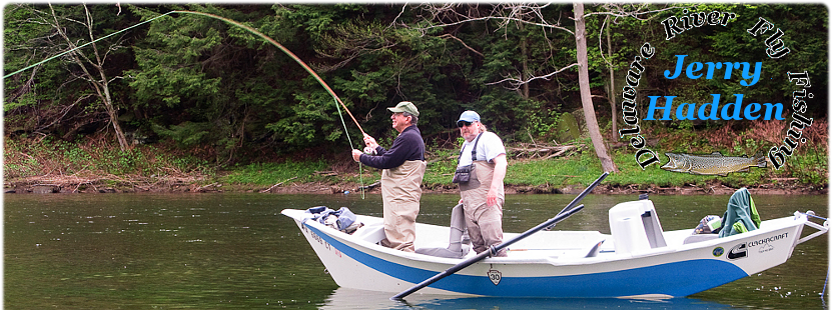
Close Enough?
Not On The Delaware River.
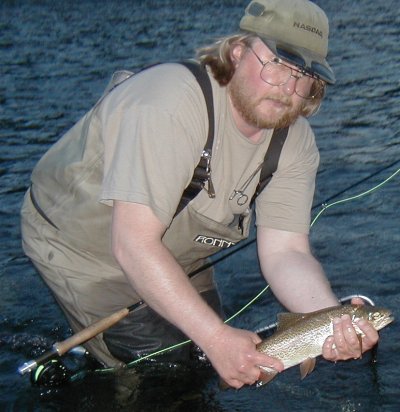
Photo by Jerry Hadden Jr.
Close Enough?
Jerry HaddenOne lesson that I learned a long time ago from fishing the upper Delaware River is "close isn't good enough". Oh yea it's good enough to have an artificial that may look close to the natural on the water at 30 feet away, but what about the up close view of the trout? It may even take a good number of uneducated fish from the local put and take streams. Will it pass close inspection, at an eight of an inch away by some of the most experienced wild trout in the world?
One, if not the biggest mistake that an angler can make is not fishing an imitation that's as close to the natural as he, or she can possibly tie, and or buy. Sure a fly that's close will work ok some of the time, you may even have a great day, once in a great while with it. Book after book, expert after expert spout, close is good enough. Hum ask them about it while they're standing in the upper Delaware when the fish decide to be exceptionally picky. Fish rising all around and not even a refusal to that fly that's close enough.
Taking fish on the Delaware consistently takes a bit more than close. Over the years I've taken great pains to match the body and wing color of the natural insects, both body and wing. Don't forget size and shape. Yes size and shape, it's the silhouette they recognize first, as it floats down stream toward them. Fish will come up and take a look at a fly that's the right size and shape, but as they get closer and see that it's the wrong color they quickly turn away.
Some say that you don't need a wing, well this depends on the day. There are days when fish will take a fly with no wing just hackle, and on other days they won't touch it unless it has a wing.
Fish seem to key in on the naturals in varying ways at various times. To complicate matters, sometimes it seems that even the relative importance of these characteristics differs. While the color is always important another of the flies characteristics, or combination of characteristics might take priority as the triggering element. Keeping this in mind it may explain why (even during the same hatch) fish will take one artificial one day and not the next. This may be why they will take and then not fifteen minutes later. The point in all this being your artificial should match the natural as closely as possible to give you the best chance to take fish consistently.
Ok so by now you know where I'm headed. I'm a nut case about color, well your right. (Only because of the fish, I'd cast the same color fly for a month if the fish didn't care) The big problem is they see so many artificials, so why not increase your chances. Over the years I've collected the naturals and matched my dubbing to them. Remember it's important to match the belly color, the color toward the fish. It's important to match the color when the dubbing is wet, wet dubbing is much darker than dry dubbing. I keep a sample of each dubbing mixed, and always mix more to match before I run out. I've even begun to scan dubbing samples into my computer. (Look out sales pitch coming right up) After looking around for a database program that would let me store pictures of both the artificial and the dubbing samples for two or three years. I decided to put one together myself, Upper Delaware River Insects. You can see screen shots of it here. Upper Delaware River Insects Click Here. Ok so I am color crazed.
I call it over dubbing.
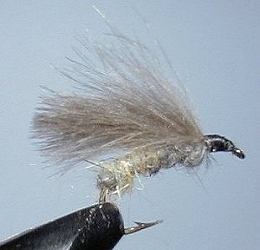
A good example of over dubbing.
Photo by Jerry Hadden
Have you ever noticed how some insect's bodies seem to be two different colors? A very good example of this would be a female Ephemerella subvaria (Hendrickson), Epeorus vitreus (orange sulphur), and a caddis that has just emerged from it's husk, and may still have a bit of it stuck around it's body.
When you mix two or three different colors of dubbing you get another solid color. (Most of the time anyway) Instead of mixing to obtain the body color needed, I use a technique that I like to call over dubbing.
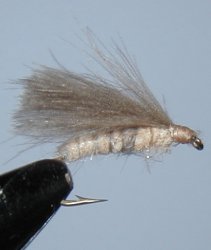
Dark over Light.
Photo by Jerry Hadden
To do this add the base body color to your thread, then simply add the second color in small amounts over top of it. Leaving it dubbed loosely or tight to obtain the desired effect. The best results can be obtained by using small amounts of the secondary color especially when the primary body color is lighter.
Compare the amount used for dubbing light over dark used on the CDC caddis in the photo above to the dark over light in the photo to the right.
Keep in mind a dark color when wet will darken much more than a light color. Using too much of a dark color will result in a body that's much darker than you intended. It's best to experiment with this concept until you attain the best results in your imitations.


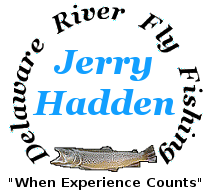 Delaware River Fly Fishing
Delaware River Fly Fishing